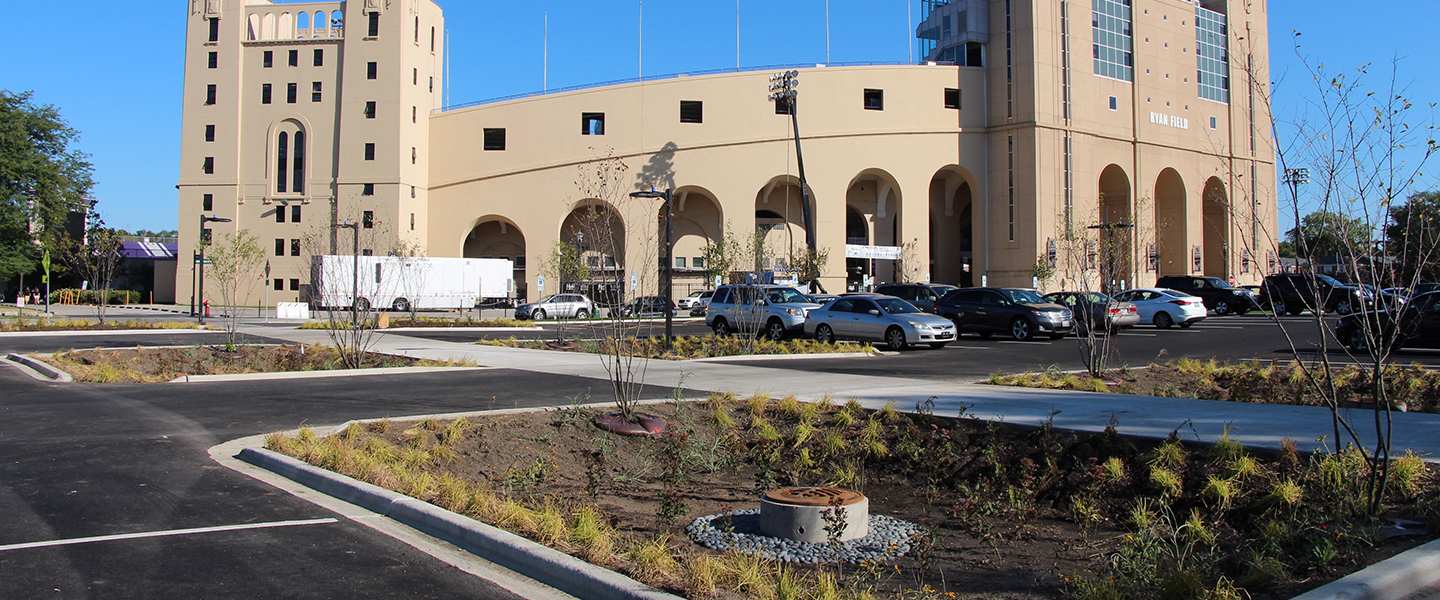
Ryan Field Parking Lot Gets Greener
Wildcat fans visiting Ryan Field this fall will find an improved parking lot with new environmentally friendly features. Green features of the reconstructed lot include rain gardens, landscaping with native plants, and updated energy efficient lighting.
The Ryan Field west parking lot is located along Ashland Avenue in Evanston, north of Central Street and west of Ryan Field. The lot is 1,500 feet long and covers more than seven acres of land. Prior to the improvements, the site had no drainage, and the pavement had deteriorated in several areas. The Northwestern Facilities Management team set out to upgrade the lot while adding environmentally friendly features.
New sustainable features include rain gardens located in the center of the lot. A rain garden is a lowered landscaped area that collects stormwater and allows it to be gradually absorbed into the ground. Rain gardens reduce the risk of urban flooding, recharge groundwater, and protect local waterways by naturally filtering out pollutants. The design team used plants that are native to the region in the rain gardens and other landscaped areas around the lot. Native plants require minimal watering and have deep root systems that allow for better infiltration of stormwater. Visitors can enjoy wildflowers such as black-eyed Susan and little Joe-pye weed as well as eye-catching ferns and grasses.
Resource conservation was also a priority in the project, from reused pulverized pavement forming the base of the new lot, to benches made from reclaimed wood for visitor’s relaxation. The hardwood for the benches came from damaged or diseased trees found within a 50-mile radius of Chicago’s urban forest.
The lighting for the new parking lot is also designed with sustainability in mind. The project team used a highly efficient LED lighting system that uses approximately one-third as much power as the old metal halide lights that were replaced. A wireless, cloud-based control system adds to the efficiency of the lighting system by automatically adjusting the brightness as needed. The lighting upgrades are expected to save over 16,000-kilowatt hours of electricity per year. This is equivalent to switching 400 incandescent lamps to LEDs.
The final product is an additional attractive and environmentally friendly facility that will benefit Wildcat fans, visitors, and the surrounding community.